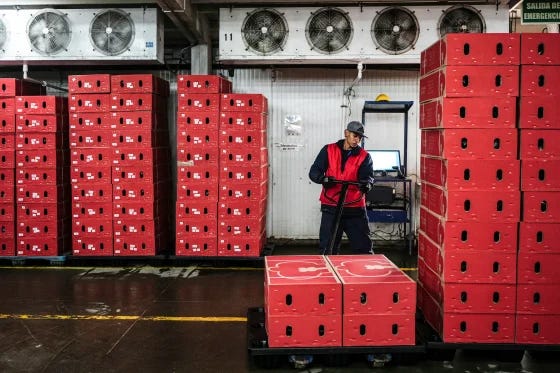Understanding Tariffs: How They Impact Trade and the Economy
Economists Question the Effectiveness of Tariffs as a Means to Boost Prosperity and Revenue
WASHINGTON — The topic of tariffs has resurfaced in recent political discussions. Here’s a breakdown of what tariffs are, how they work, and their potential effects on the economy:
Tariffs are essentially taxes levied on imported goods. In the U.S., these tariffs are usually charged as a percentage of the price a buyer pays to a foreign seller, with the money collected by U.S. Customs and Border Protection agents at ports across the nation. For example, tariffs on passenger cars are generally set at 2.5%, while golf shoes face a 6% tariff. Goods from countries with trade agreements, such as the U.S.-Mexico-Canada agreement (USMCA), often face no tariffs, allowing for smoother trade between the U.S., Mexico, and Canada.
While tariffs may seem like a tool for economic growth, most mainstream economists are skeptical about their effectiveness. They often view tariffs as an inefficient way to generate government revenue and stimulate economic prosperity.
The Misconception About Who Pays Tariffs
A common misconception surrounding tariffs is who bears their cost. Former President Donald Trump, a strong proponent of tariffs, claimed that foreign countries were responsible for paying them. In reality, it is U.S. importers — usually American companies — who pay these tariffs, with the revenue going to the U.S. Treasury. These businesses often pass the added cost onto consumers through higher prices on goods.
While foreign countries may feel the effects of tariffs, particularly when their products become more expensive and less competitive in the U.S. market, U.S. consumers often feel the pinch first. For instance, a study by economist Yang Zhou from Shanghai's Fudan University found that the tariffs on Chinese goods imposed under Trump caused significantly more economic damage to China than to the U.S.
Trump’s View on Tariffs
Trump consistently promoted tariffs as a solution to various economic and political challenges, claiming they would reduce the federal deficit, lower consumer prices, create more factory jobs, and fund social programs like childcare. At one rally, he famously declared, "Tariffs are the greatest thing ever invented."
During his presidency, Trump initiated tariffs on a wide range of imports, from solar panels to steel, and particularly focused on China. He even coined the nickname “Tariff Man” for himself, emphasizing his belief in tariffs as an economic tool. His stance has continued into his second term, with promises to further increase tariffs.
The United States’ shift away from its post-World War II commitment to global free trade, many attribute to the perceived negative impacts of open markets on U.S. manufacturing jobs, particularly in the face of China’s growing economic influence.
The Primary Purpose of Tariffs
Tariffs are generally aimed at protecting domestic industries from foreign competition by making imported goods more expensive. They can also serve as a retaliatory measure against countries accused of unfair trade practices, such as subsidizing exports or "dumping" products at below-market prices.
Historically, tariffs were a significant source of U.S. government revenue before the establishment of the federal income tax in 1913. From 1790 to 1860, tariffs accounted for 90% of federal income. However, with the expansion of global trade post-World War II, tariffs became less central to government funding, with income taxes and Social Security contributions taking over as the primary revenue sources.
In the fiscal year ending September 30, 2023, the U.S. collected around $80 billion in tariffs, a small sum compared to the $2.5 trillion from individual income taxes and the $1.7 trillion from Social Security and Medicare taxes.
Despite this, Trump advocated for a return to a tariff-heavy budget policy, reminiscent of the 19th century. He also used tariffs as a tool for geopolitical leverage, including pressuring Mexico to address migration issues in 2019 and even suggesting tariffs as a way to prevent war.
Why Economists Remain Critical of Tariffs
Economists often criticize tariffs for raising costs for both businesses and consumers. They also tend to trigger retaliatory measures from other countries. For example, the European Union retaliated against Trump’s steel and aluminum tariffs by taxing American products, including bourbon and Harley-Davidson motorcycles. Similarly, China responded to U.S. tariffs by imposing tariffs on American agricultural goods like soybeans and pork, aiming to impact U.S. farmers.
A study by economists from MIT, Harvard, and the World Bank found that Trump’s tariffs failed to bring back jobs to U.S. industries as intended. While the tariffs targeted sectors like steel, job growth in these industries remained minimal. For example, U.S. steel plants employed around 140,000 people before and after the tariffs. By contrast, Walmart employs 1.6 million workers in the U.S.
The study also highlighted the negative impact of retaliatory tariffs on U.S. farmers, despite government compensation. In the end, the tariffs had little effect on restoring American manufacturing jobs, but they did contribute to increased political support for Trump and Republican candidates, especially in manufacturing-heavy states.
Conclusion
While tariffs may serve as a political tool or a means to protect domestic industries, economists generally view them as a counterproductive measure that harms consumers, provokes international retaliation, and doesn’t deliver the promised economic benefits.


